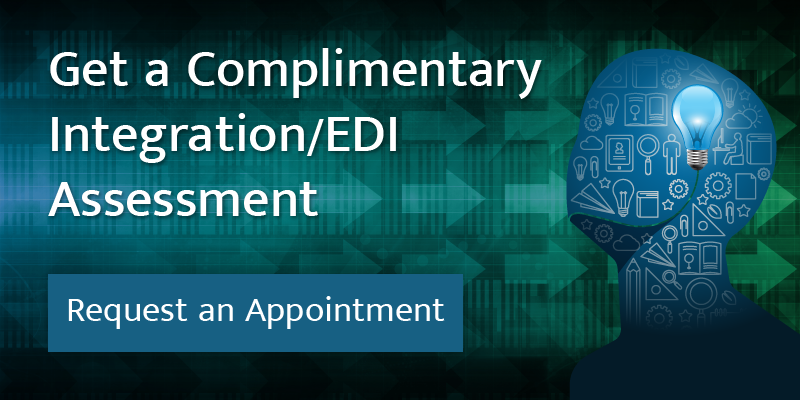
In blog articles from February...B2B eCommerce Opportunities in Today's Economy and March...B2B eCommerce - The Stimulus Package For Your Organization, I talked about organizations that view the IT department as a valuable driver of efficiency and effectiveness though the systems they develop. I also spoke of opportunities where existing integration tools could further support the business in tough economic times. The result of these additional solutions include enhanced productivity, reduced cycle times, and enhanced business process modeling/management, allowing for better business network integration, collaboration, and supply chain visibility/management. With the constrained budgets of many, much of my ranting early in the year was about getting the most out of the data integration tools that exist within the organization.
While former articles sought to identify integration opportunities for the budget constrained, in May I turned my sites towards the evolution of EDI, EAI, and file transfer tools into multi-functional integration suites. This outlined a new class of product offered by leading integration companies with consolidated B2B integration, A2A enterprise integration, and managed file transfer capabilities.
Integration suite products are for the less budget constrained and offer huge return opportunities for the investment. Many organizations that have implemented integration suites are realizing the benefits these tools offer and are using them for integration solutions that combat the tough competitive/economic landscape. Yet others have not implemented an integration suite or are not realizing all the benefits of such a tool if they have one.
Those having, or considering, an integration suite would be well served if the acquisition and implementation of an integration suite followed an enterprise integration strategy. The pieces of this strategy could include: high level integration needs for the business, the documentation of every known or anticipated integration need, and outline the integration tool components required to accomplish the integrations. These are just a few items that could exist within the strategy, but the point is the acquisition of an integration suite would match the requirements as defined in an integration strategy.
The value of such a strategy, and of a comprehensive integration solution (CIS / integration suite), is addressed in an excellent piece of research I stumbled across prior to departing on a recent vacation. It outlines the value of implementing a comprehensive integration solution and provides statistics on the number and types of firms that might be planning to do so.
The research was a commissioned study conducted by Forrester Consulting on behalf of Sterling Commerce. This study had excellent recommendations, and the survey of 260 IT executives had surprising results.
Important observations based on the research...
- Often there is not an enterprise wide approach to internal/external business integration.
- Multiple EDI, EAI, and file transfer tools exist and this is not optimal regarding uses of human and financial capital.
- Plans firms have for upgrades to their integration infrastructure may be step wise and not the large jump in infrastructure improvement one must gain maximum benefits and efficiencies.
- Comprehensive integration solutions should be evaluated and acquired only after developing an enterprise integration strategy.
Important observations based on the survey responses...
- Over 80% of those surveyed are planning on upgrading their internal and external infrastructure in the next 12 months or less.
- The survey does not specify if those planning to upgrade integration infrastructure are making step wise upgrades or upgrades to a comprehensive integration solution.
- The integration infrastructure is not effective in regard to quick response to integration challenges, as cited by survey participants.
- Delays in integrating systems, or across business partner networks, was reported to be costing significant time and money.
- The top two reasons cited for the lack of quick response to integration challenges was the need to rely on multiple integration tools, and existing integration tools were based on older technology.
- Respondents recognized the value of a CIS citing benefits of better support for complex supply chain integration and lower costs for hardware, maintenance, and training.
These are just a few of my observations from what was a very lengthy study. Maybe a CIS (or integration suite) isn't right for your organization. But if you are considering it, have the evaluation guided by an enterprise integration strategy and read this research. It's worth a look.
Source: A commissioned study conducted by Forrester Consulting on behalf of Sterling Commerce, December 31, 2008.



